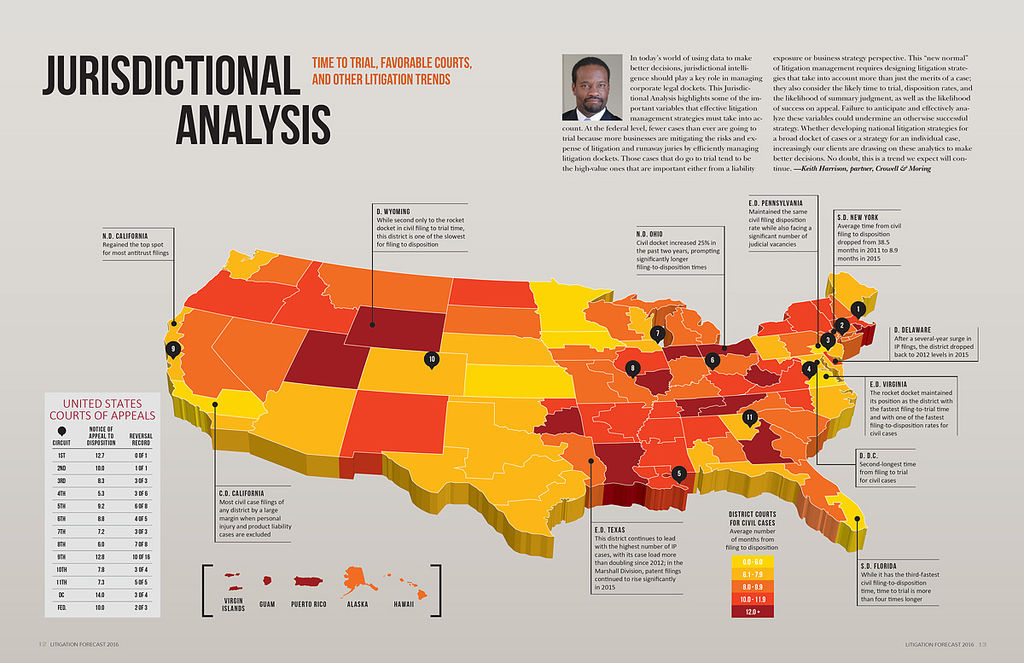Jurisdictional Analysis - Time to Trial, Favorable Courts & Other Litigation Trends
Publication | 01.19.16
In today’s world of using data to make better decisions, jurisdictional intelligence should play a key role in managing corporate legal dockets. This Jurisdictional Analysis highlights some of the important variables that effective litigation management strategies must take into account.
At the federal level, fewer cases than ever are going to trial because more businesses are mitigating the risks and expense of litigation and runaway juries by efficiently managing litigation dockets. Those cases that do go to trial tend to be the high-value ones that are important either from a liability exposure or business strategy perspective.
This “new normal” of litigation management requires designing litigation strategies that take into account more than just the merits of a case; they also consider the likely time to trial, disposition rates, and the likelihood of summary judgment, as well as the likelihood of success on appeal. Failure to anticipate and effectively analyze these variables could undermine an otherwise successful strategy.
Whether developing national litigation strategies for a broad docket of cases or a strategy for an individual case, increasingly our clients are drawing on these analytics to make better decisions. No doubt, this is a trend we expect will continue.
—Keith Harrison, partner, Crowell & Moring

[Click to access a high resolution version of the
2016 Jurisdictional Analysis Map]
- N.D. California — Regained the top spot for most antitrust filings.
- C.D. California — Most civil case filings of any district by a large margin when personal injury and product liability cases are excluded.
- D. Delaware — After a several-year surge in IP filings, the district dropped back to 2012 levels in 2015.
- D. D.C. — Second-longest time from filing to trial for civil cases.
- S.D. New York — Average time from civil filing to disposition dropped from 38.5 months in 2011 to 8.9 months in 2015.
- S.D. Florida — While it has the third-fastest civil filing-to-disposition time, time to trial is more than four times longer.
- N.D. Ohio — Civil docket increased 25% in the past two years, prompting significantly longer filing-to-disposition times.
- E.D. Pennsylvania — Maintained the same civil filing disposition rate while also facing a significant number of judicial vacancies.
- E.D. Texas — This district continues to lead with the highest number of IP cases, with its case load more than doubling since 2012; in the Marshall Division, patent filings continued to rise significantly in 2015.
- E.D. Virginia — The rocket docket maintained its position as the district with the fastest filing-to-trial time and with one of the fastest filing-to-disposition rates for civil cases.
- D. Wyoming — While second only to the rocket docket in civil filing to trial time, this district is one of the slowest for filing to disposition.
[PDF Download: 2016
| |
[Web Index: 2016 Litigation
|
Contacts
Insights
Publication | 11.24.25
Litigation Funders Looking to Invest in Law Firms Face Hurdles
Publication | 11.19.25
Who Can Fix It? Antitrust, IP Rights, and the Right to Repair
Publication | 11.14.25
Three Steps Tech Companies Can Take Today To Prepare To Ride A Blue Wave In 2026



